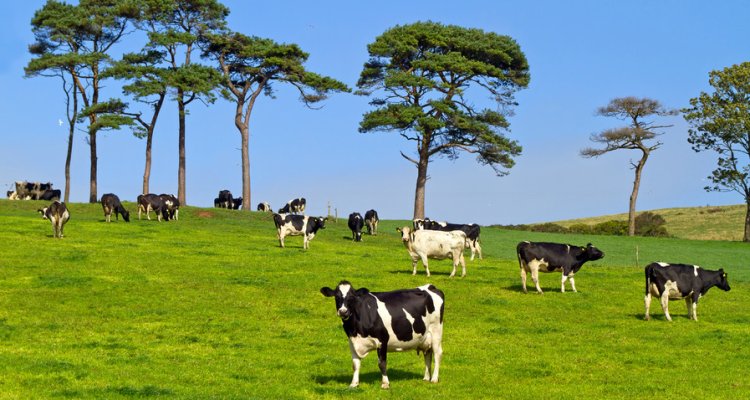
Project
The role of livestock in the food system: the case of Ireland
PhD project by Donagh Hennessy. To meet global nutritional needs within global production boundaries a solution is to use livestock to convert biomass that humans cannot eat into valuable food, manure and other ecosystem services. This PhD will examine this solution pathway and explores the role of livestock in an Irish agriculture sector that avoids feed -food competition.
The global demand for animal sourced food (ASF) is expected to continue, increasing its pressures on the environment, such as land-use and the climate. Food production contributes about 25% of anthropogenic greenhouse gas (GHG) emissions, causes approximately one third of terrestrial acidification and the majority of global eutrophication. Livestock and its feed production emissions dominate these environmental impacts, with feed consuming 40% of crop production and livestock causing 14.5% of GHG emissions. To tackle these environmental impacts solutions are needed to meet global nutritional needs within global production boundaries .
Two common solution pathways are: "produce more ASF with less impact" or "eat less or efficient ASF". Both solution pathways, however, are based on product footprints, which ignore feed-food competition and interlinkages in the food system. To overcome these shortcomings, a third solution pathway uses a food systems approach and has shown that the role of livestock in the food system is to convert biomass that humans cannot eat into valuable food, manure and other ecosystem services. It allows for ASF production from leftovers and non-edible biomass avoiding feed-food competition. It cycles biomass through the entire sector to maximise food production while minimising waste. This PhD will examine this third solution pathway and explores the role of livestock in an Irish agriculture sector that avoids feed-food competition.
Ireland is an interesting example of an EU country with significant agricultural GHG emissions, accounting for one third of total emissions, which are caused predominantly by livestock. Grass based livestock systems dominate 92% of Ireland's landscape, with 75% of the remaining arable area being used for feed production. This feed production only meets 35% of national feed needs, which is low compared to the EU average of 79%. Additional feed required is imported. Ireland serves as a case study of the common feed-food competition that exists in most developed agriculture sectors.
To demonstrate a sector that avoids food-feed competition, I will develop a simulation model to highlight Ireland's feed-food competition. It will avoid that competition while observing environmental and policy boundaries that other similar countries can emulate.